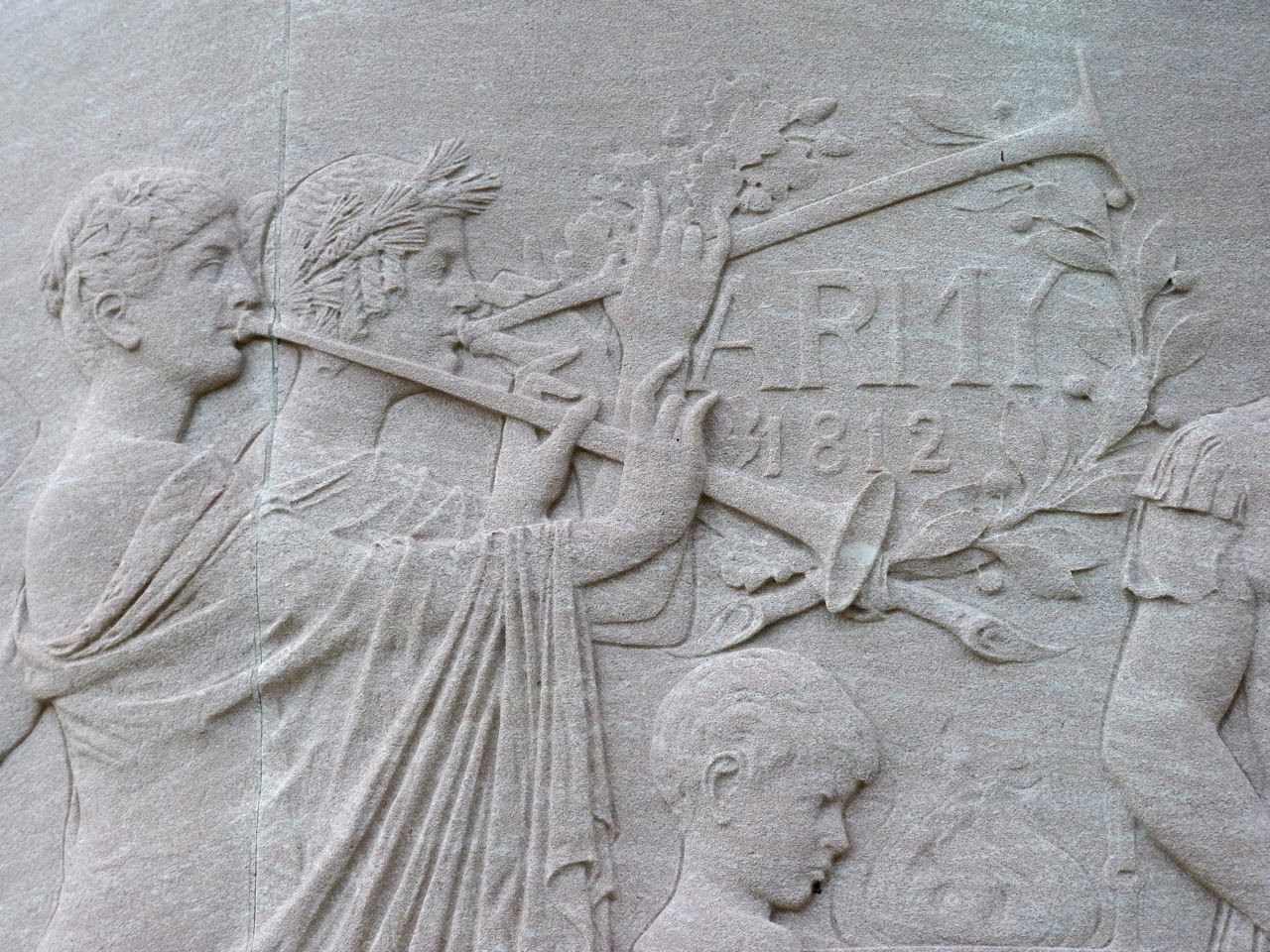 |
| Oriforme, Jean Arp. 1962/1977 Washington, D.C. |
Two stainless steel sculptures in the National Gallery Washington D.C. collection provide a challenge of interpretation for every viewer. The ideas generated by Jean Arp and George Rickey are paramount and integral to their art forms.
Jean Arp (1886-1966) developed an interest in natural forms such as rocks, branches, roots and grass…. His observations resulted in organic abstractions in art that he referred to as “Earthly Forms.” 1 Arp often worked with paper, cardboard and wood which are impermanent materials that may also be reminders of the fragility of life. Arp’s 1962 model for Oriforme was fabricated in stainless steel in 1977, eleven years after his death. 2
The artistic legacy of Jean (Hans) Arp is bonded to Dada, which was an affiliation of artists, actors, and writers who reacted against the devastation of World War I. Dada began in Zurich, Switzerland and rapidly spread to major cities: Berlin; Hanover; Cologne; Paris; and New York. Jean Arp, in his early thirties during the war, joined colleagues such as Hugo Ball and Tristan Tzara at the Cabaret Voltaire in Zurich. Arp wrote “Despite the remote booming of the artillery, we sang, painted, pasted and wrote poetry with all our might.” 3 He intended to eliminate reminders of human personality (and control) from his work, and introduced elements of chance.
 |
| Cluster of Four Cubes, George Rickey. 1992 |
George Rickey’s Cluster of Four Cubes is a geometric abstraction that includes the element of actual motion. A patient observer will see subtly changing variations in the configuration of the cubes, but the motor is hidden. Kinetic art is based upon philosophic ideas in response to industrialization and the machine age. Rickey wrote an essay entitled The Morphology of Movement to articulate kinetic relationships. 4 His subjects initially pertained to the forces of nature, not mimetic representations of trees and flowers. He stated interest in “the waving of the branches and the trembling of stems, the piling up or scuddling of clouds, the rising and setting and waxing and waning of heavenly bodies; the creeping of spilled water on the floor; the repertory of the sea – from ripple and wavelet to tide and torrent.” 5 He recognized complex relationships of motion that could be conceptualized for his sculptures. George Rickey (1907-2002) was born in South Bend, Indiana, but in 1913 moved to Scotland with his family. He shared an artistic affinity with leading American and European artists.
Endnotes:
1. Leah Dickerman. Dada - exhibition catalog. (National Gallery of Art, DC., 2006), 461.
2. Jean Arp. 2013. The National Gallery of Art.
http://www.nga.gov/content/ngaweb/Collection/art-object-page.56617.html
(accessed December 11, 2013).
3. Dickerman, 19.
4. Jack Burnham. Beyond Modern Sculpture – The Effects of Science and Technology on the Sculpture of This
Century. (New York: Braziller, Inc., 1969), 268.
5. Ibid., 267.








